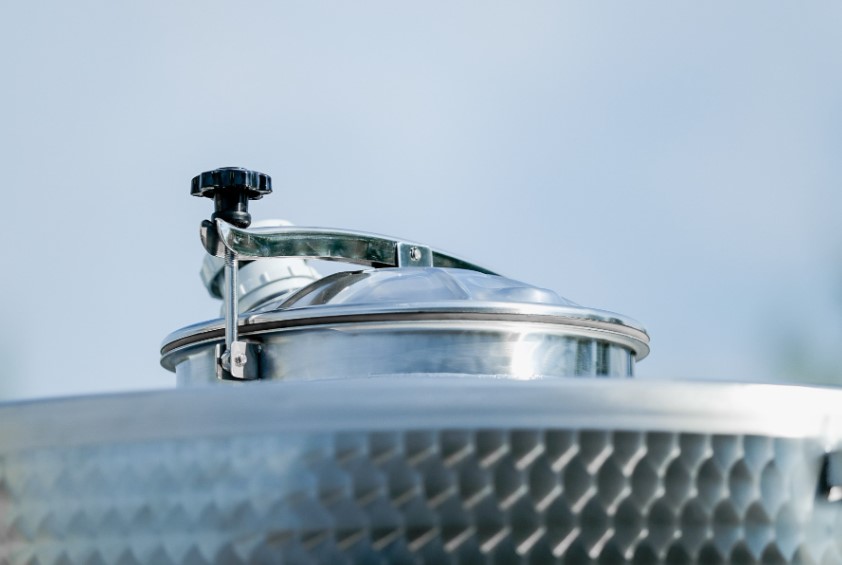The containers used in winemaking, be it barrels, tanks, or amphorae, play a pivotal role in shaping the taste of the finished product. While often discussed in the wine world, the actual impact of these vessels goes beyond the obvious, influencing the wine’s flavor in nuanced and intricate ways. In this exploration, we delve into the fascinating world of wine vessels, acknowledging them as a key element in the intricate matrix that defines each wine.

The Variety of Wine Vessels: Materials and Their Significance
Wine vessels come in various materials, ranging from traditional wood and stainless steel to unconventional choices like concrete, fibreglass, and clay. Some winemakers even push boundaries with vessels crafted from granite, stoneware fermenters, or, in rare cases, hollowed-out marble rocks. Additionally, there’s the intriguing practice of deliberately aging wines in glass exposed to daylight. Understanding the materials used is crucial, as they contribute to the overall character of the wine.
Key Considerations: Flavor, Thermal Stability, and Oxygen Exchange
When evaluating wine vessels, three primary considerations come to the forefront. Firstly, does the material add any flavor to the wine, especially in the case of wood? Secondly, how thermally stable is the chosen material? Lastly, does the vessel allow for oxygen exchange, influencing the wine’s development over time? These aspects become crucial touchpoints in the decision-making process for winemakers aiming to craft wines with specific characteristics.
Practical Aspects: Maneuverability, Cleanliness, and Adaptability
Beyond the flavor and material considerations, practical aspects play a pivotal role. Winemakers must evaluate how easily a vessel can be maneuvered, its ease of cleaning, and overall hygienic conditions. Additionally, compatibility with the winery or cellar, along with the vessel’s adaptability to heating or refrigeration, becomes crucial. This practical lens ensures that the chosen vessel aligns seamlessly with the winemaking process and environment.
Stainless Steel’s Neutrality: Temperature Control and Aroma Precision
When it comes to influencing the flavor, texture, and taste of wine, stainless wine tanks emerge as a neutral players. This inert material imparts no flavor to the wine, making it a canvas for the pure expression of grape characteristics. Beyond neutrality, stainless steel’s temperature control capabilities become instrumental.
By utilizing sleeves, walls, or submerged elements, winemakers can easily manipulate temperatures, fostering specific aromas like isoamyl acetate—a key ester contributing to the distinctive smell of peardrop. The cool fermentation achieved in stainless steel tanks becomes the bedrock for certain aromatic complexities.
Concrete’s Quiet Impact: Stability, Oxygen Exchange, and Lees Suspension
While also maintaining a neutral stance, concrete steps into the winemaking spotlight with enhanced thermal stability compared to stainless steel. This stability proves invaluable during fermentation, preventing temperature spikes and ensuring stored wine remains on a steady keel even without refrigeration.
Concrete introduces an intriguing element – the potential for controlled oxygen exchange. In a fashion comeback, concrete vessels, along with egg-shaped tanks, are gaining popularity. These vessels not only offer the benefits of concrete but also boast a shape that keeps lees (spent yeast) in perpetual suspension. This unique feature adds texture to the wine while shielding it from oxidation, allowing just the right amount of beneficial oxygen exposure.